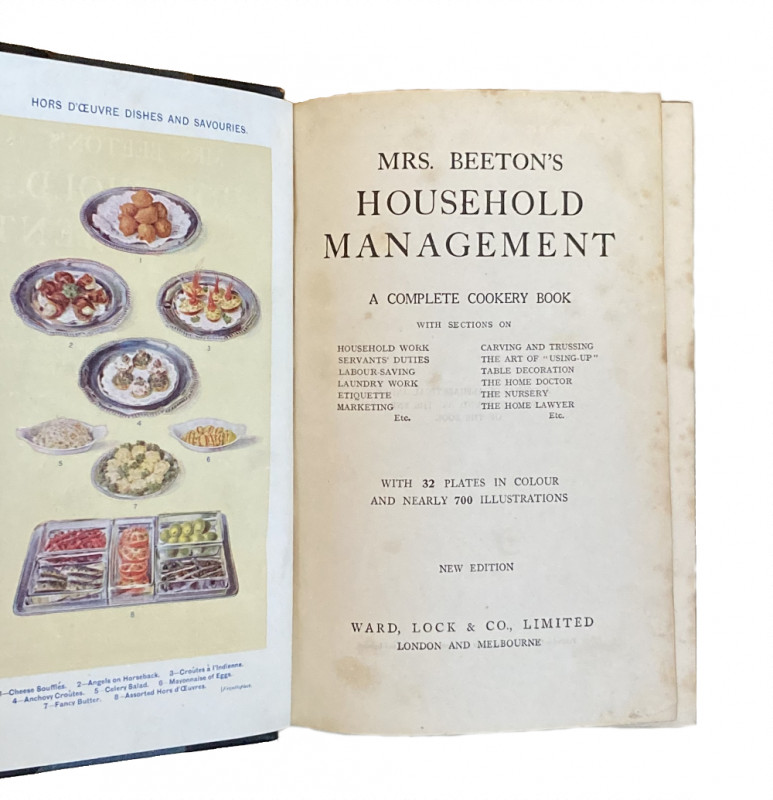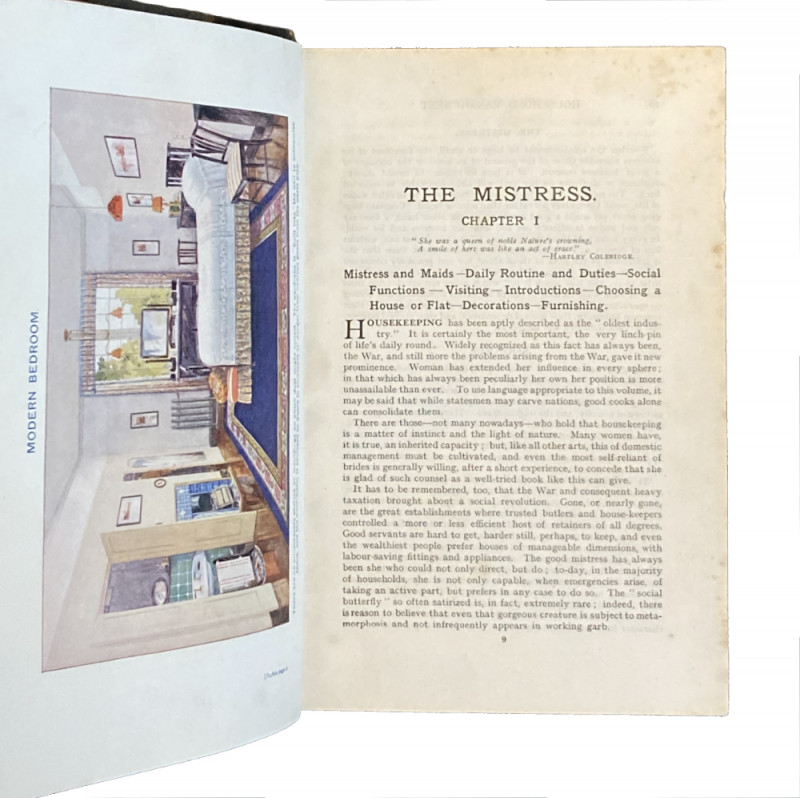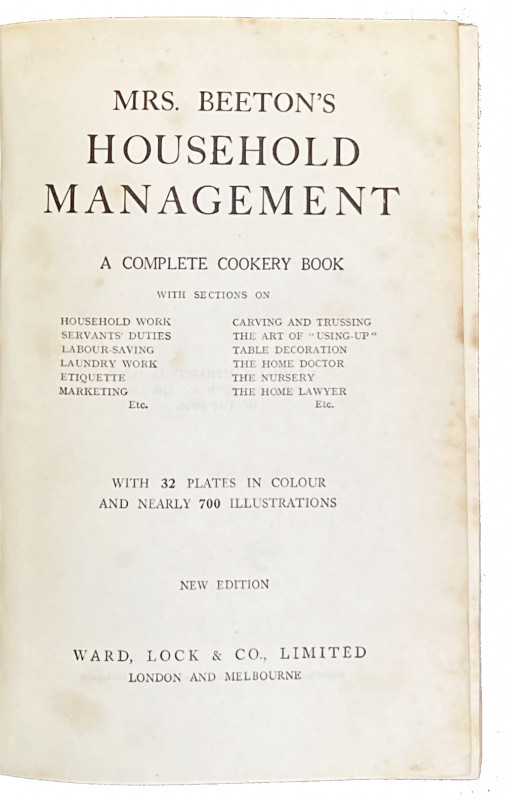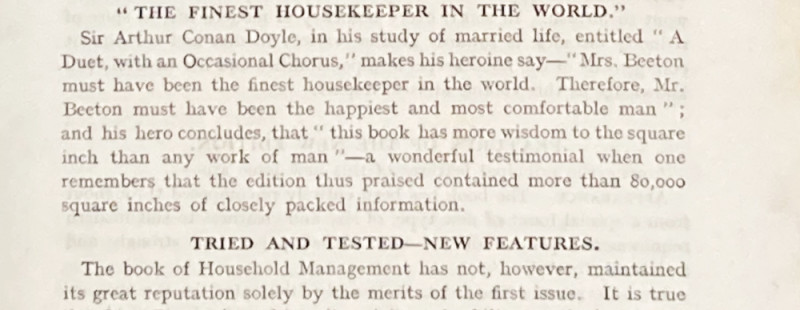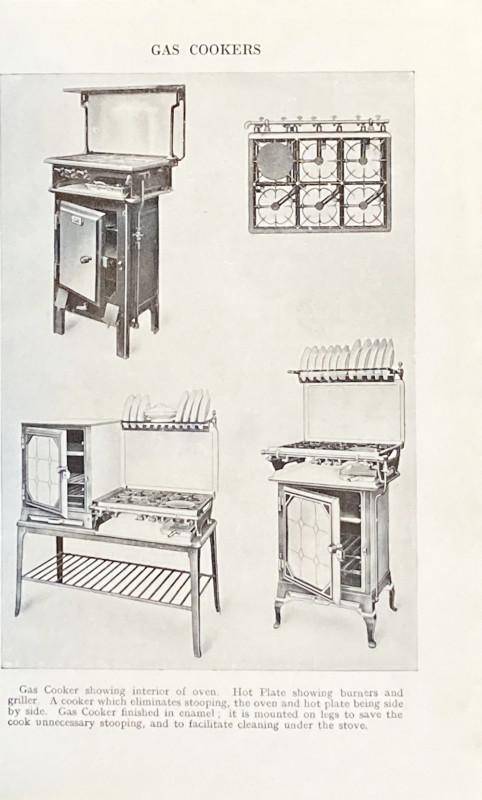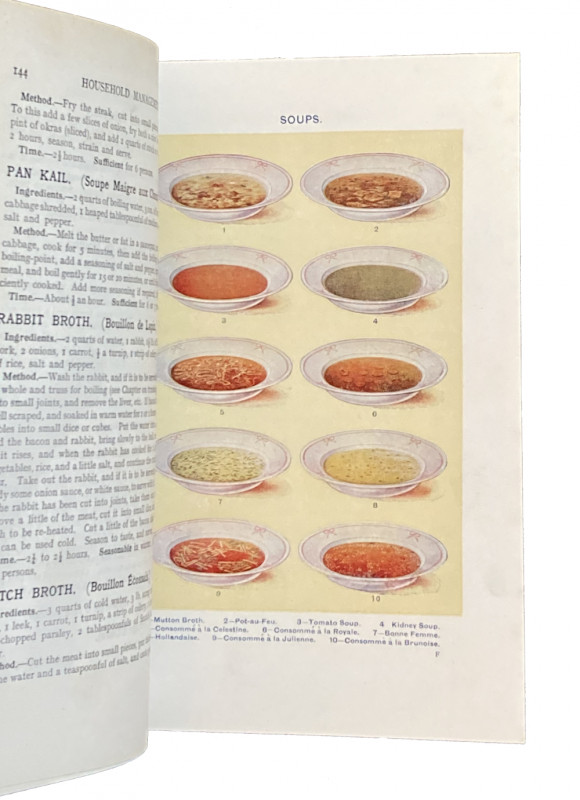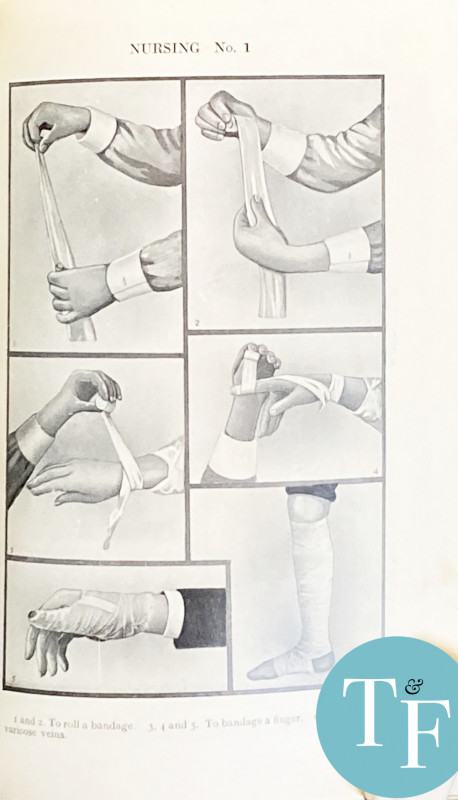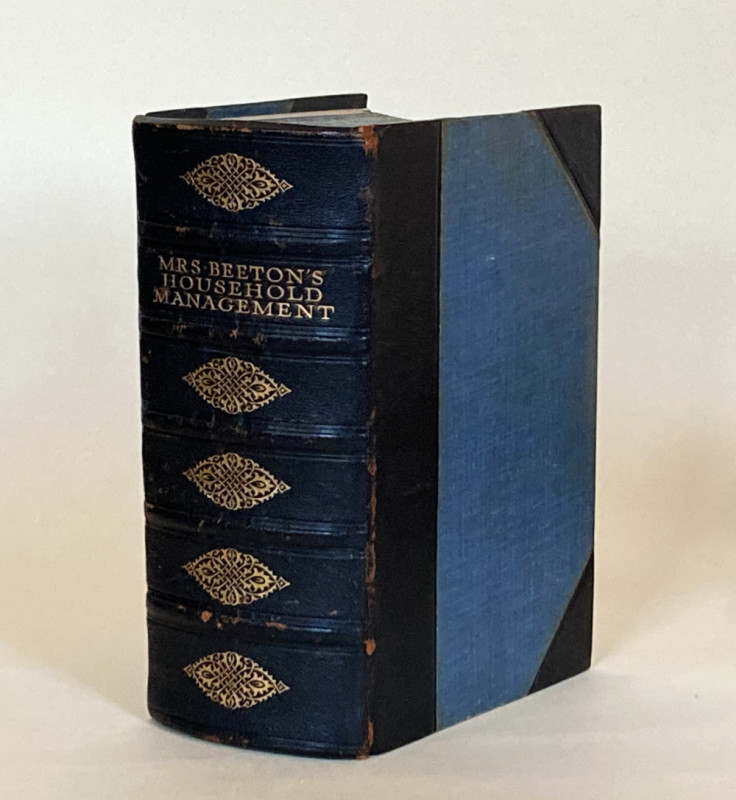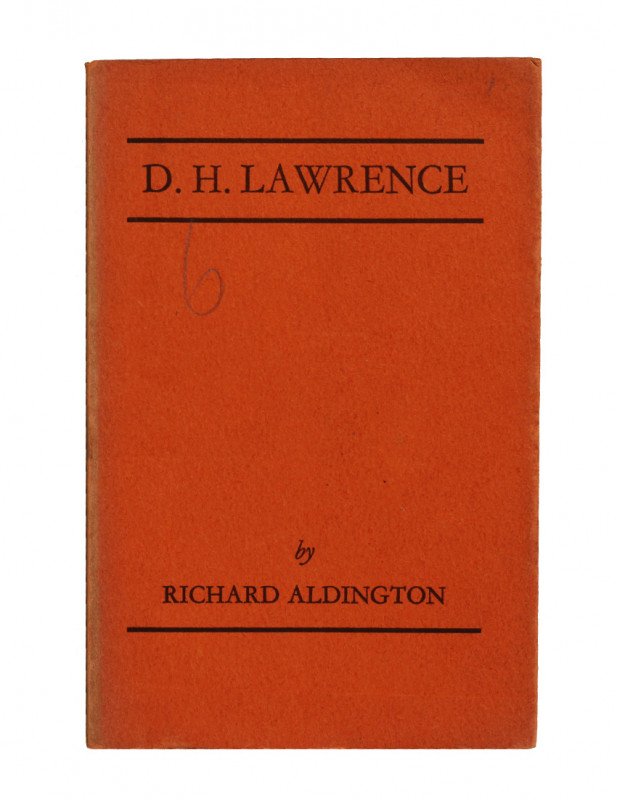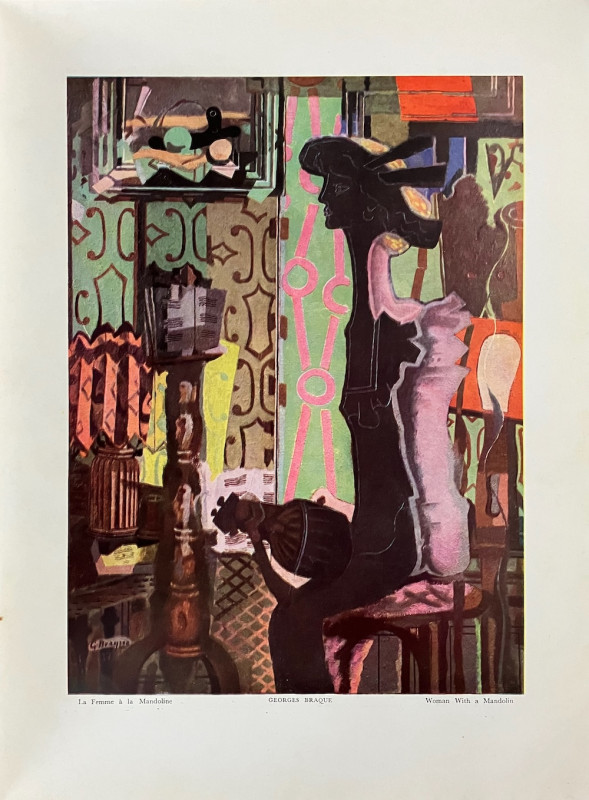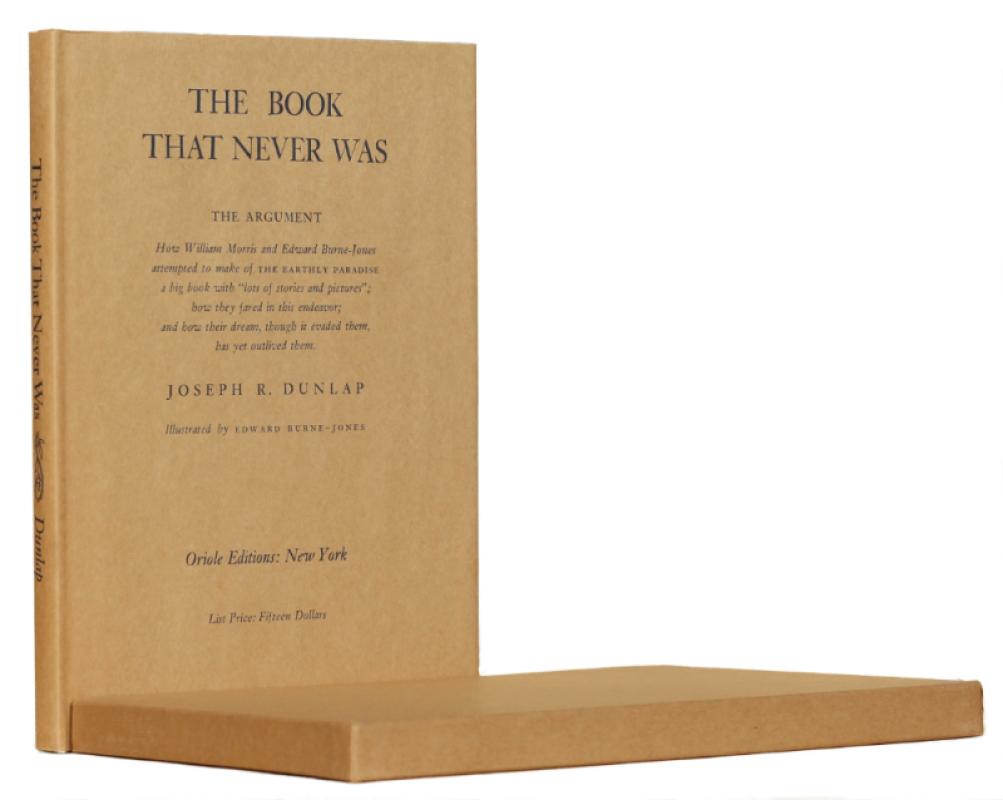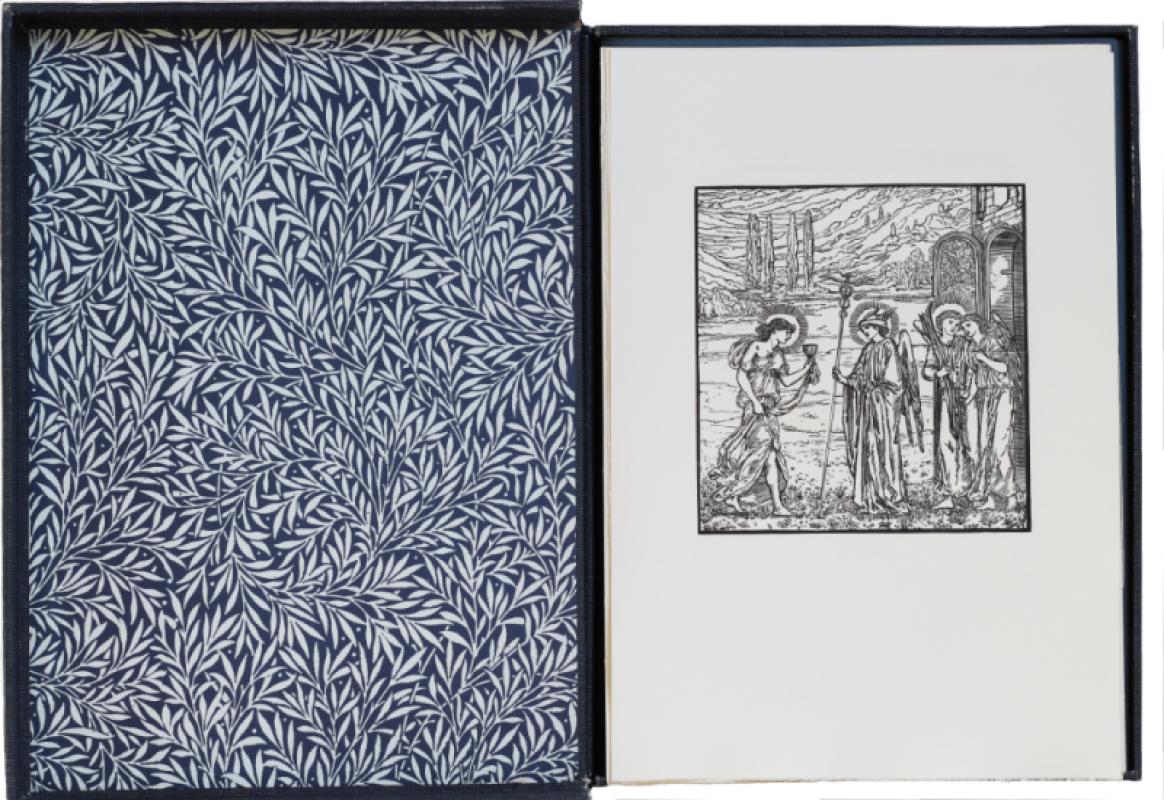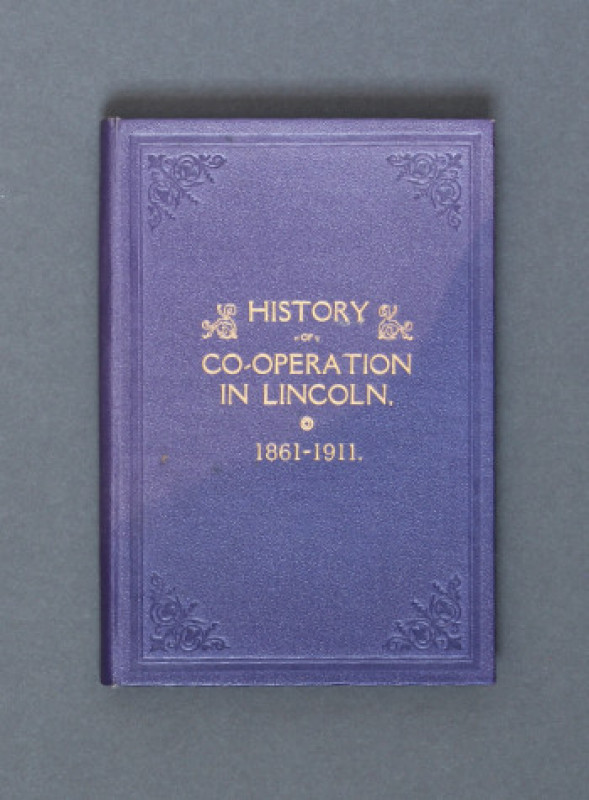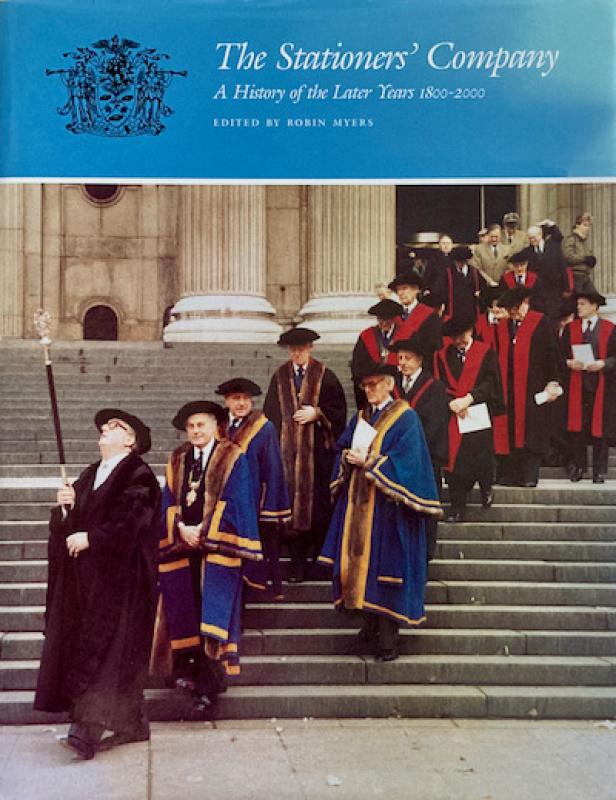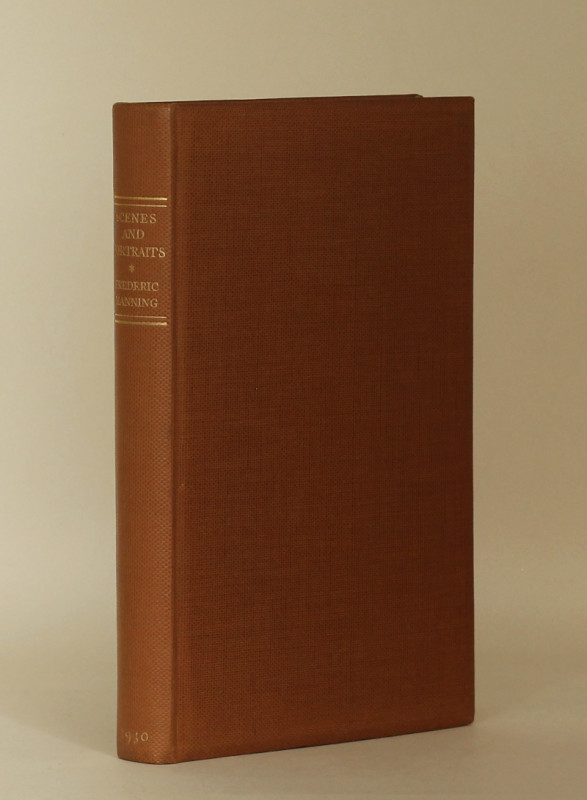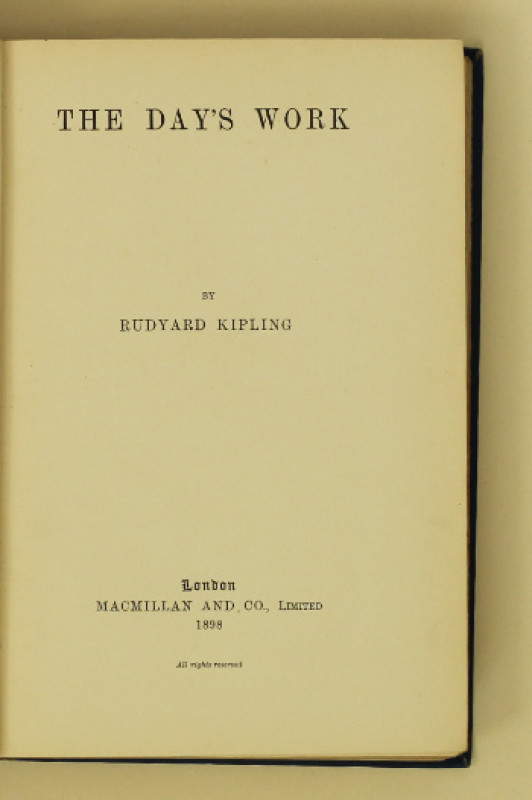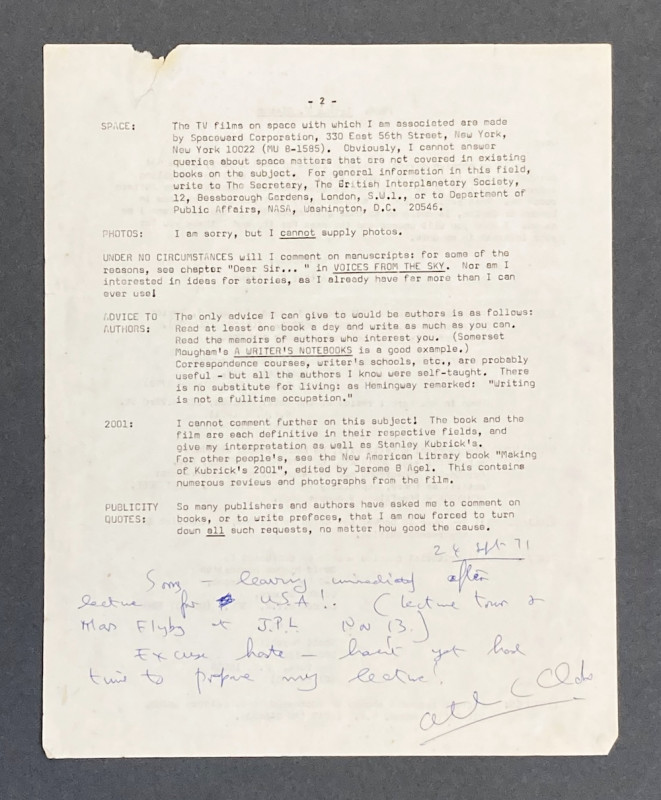Mrs. Beeton’s Household Management. A Complete Cookery Book ... New Edition
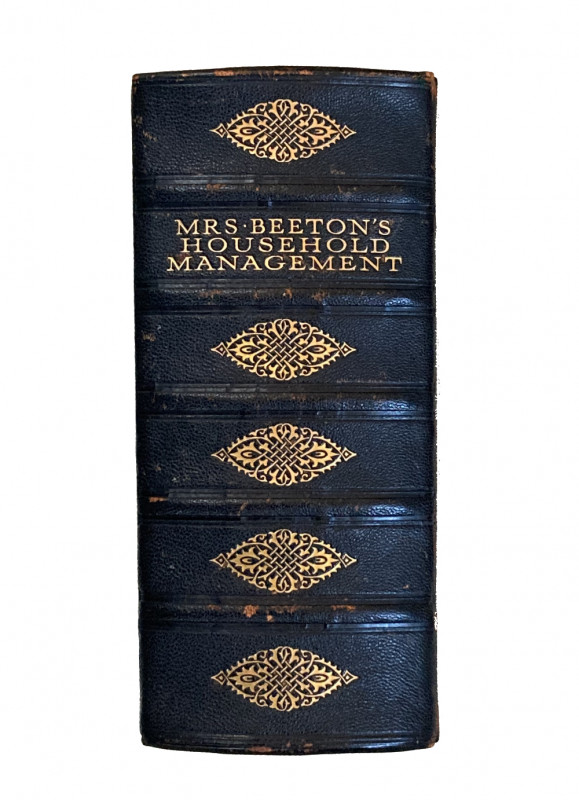

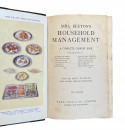
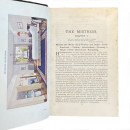





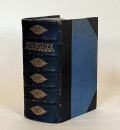
Book Description
MRS BEETON UPDATED FOR THE POSTWAR LIFESTYLE OF THE 1920S AND WITH MANY RECIPES CONTRIBUTED BY HERMAN SENN, IN THE SCARCE HALF MOROCCO BINDING
Octavo (211 x 140mm), pp. [i-iv (half-title, publisher’s advertisements on verso, title, imprint on verso)], v-xvi (‘Preface’, ‘Abridged Preface to the First Edition’, ‘General Contents’, ‘Colour Plates’), 1-8 (‘Illustrations’, ‘Recipes and Directions for Each Meal’, ‘Economies and Substitutes’, ‘How to Use the Book’, ‘Index’), 9-1632 (text), 1633-1680 (‘Analytical Index’). Colour-printed frontispiece, 31 colour-printed plates, and 65 half-tone plates with illustrations recto-and-verso. Letterpress tables and 14 full-page illustrations in the text. (Some light, mainly marginal spotting and some marking.) Original half black hard-grained morocco over blue cloth, spine gilt in compartments, lettered directly in one, others decorated with central strapwork design, marbled blue endpapers with cloth hinges, all edges marbled. (Extremities slightly rubbed and bumped, some slight rubbing and marking on boards, heavier on lower board, bookblock split at hinges). A very good copy in the scarce half-morocco binding.
Octavo (211 x 140mm), pp. [i-iv (half-title, publisher’s advertisements on verso, title, imprint on verso)], v-xvi (‘Preface’, ‘Abridged Preface to the First Edition’, ‘General Contents’, ‘Colour Plates’), 1-8 (‘Illustrations’, ‘Recipes and Directions for Each Meal’, ‘Economies and Substitutes’, ‘How to Use the Book’, ‘Index’), 9-1632 (text), 1633-1680 (‘Analytical Index’). Colour-printed frontispiece, 31 colour-printed plates, and 65 half-tone plates with illustrations recto-and-verso. Letterpress tables and 14 full-page illustrations in the text. (Some light, mainly marginal spotting and some marking.) Original half black hard-grained morocco over blue cloth, spine gilt in compartments, lettered directly in one, others decorated with central strapwork design, marbled blue endpapers with cloth hinges, all edges marbled. (Extremities slightly rubbed and bumped, some slight rubbing and marking on boards, heavier on lower board, bookblock split at hinges). A very good copy in the scarce half-morocco binding.
Dealer Notes
‘New Edition’. Isabella Beeton’s The Book of Household Management was first published in parts between 1859 and 1861 by her husband Samuel Beeton, and then appeared in book form – with colour-printed illustrations – in 1861 (as Bitting notes, it was ‘one of the earliest cookery books using colored illustrations’, p. 32). The work was an immediate success, and there ‘are many pointers to the reason for the book’s astonishing popularity, chief of which were undoubtedly its ease of reference, its clarity of instruction, and its ability to answer questions on every conceivable aspect of household management and domestic affairs. [...] A total of 2,751 numbered recipes and household hints and instructions were given, and each of the recipes carried a legend at the end giving an average cost, the time necessary for cooking, the amount of persons it was sufficient for, and, where applicable, the months when the meat, game, or fish, was in season. This was a new innovation and one much appreciated by her many thousands of readers’ (Quayle, Old Cook Books, p. 225). The year after his wife’s death at the age of 28 in 1865, Samuel Beeton sold the rights to the book to Ward, Lock, and Tyler, who reissued the book in numerous editions through the nineteenth and twentieth centuries.
The present, ‘new’ edition was comprehensively revised and rewritten to take account of the societal changes which marked the 1920s in the immediate aftermath of World War I: the ‘servant problem’ and the adjustments necessary to run a household with fewer staff than would have been customary ten years earlier; the advent of dish-washing machines, electrical household apparatus, and the proliferation of ingenious ‘labour-saving devices’; widespread car ownership; the increasing number of individuals and families living in flats; and the changing role of women in society. The ‘Index’ divides the contents of the volume into sections on ‘Household Work’, ‘Table Service’, ‘Cookery’, ‘The Home Lawyer’, and ‘The Home Doctor’ (which gather thematically information appearing in different chapters), but the bulk of the volume is dedicated to all aspects of food and drink (pp. 46-1460). This includes some 4,000 recipes ‘many of which are contributed or adapted by Mr. C. Herman Senn’, who was one of the most prolific and well-regarded writers on food and cookery working in Britain at the time. The section on cookery is eclectic and comprehensive, and includes sections on ‘Vegetarian Cookery’ (pp. 1165-1190), ‘Invalid Cookery’ (pp. 1191-1228), ‘Jewish Cookery’ (pp. 1229-1236), together with a broad range of international cuisines, which are grouped firstly by cookery of the current or former British colonies – ‘Australian Cookery’, ‘South African Cookery’, ‘Indian Cookery’, and ‘American and Canadian Cookery’ (pp. 1237-1296) – and secondly the cuisine of European countries: ‘French Cookery’, ‘German and Austrian Cookery’, ‘Italian Cookery’, and ‘Spanish Cookery’ (pp. 1297-1334).
The editors’ preface to this edition states that ‘[f]or more than half a century Mrs. Beeton has been the guide, philosopher and friend of countless happy homes’ (p. v), and it includes a quotation from Clemence Dane’s novel The Regiment of Women, published in 1917, indicating that this edition was issued after that date. According to the publisher’s advertisement on the verso of the half-title, the work was available ‘strongly bound, 12s. 6d.; also half-morocco’, and it was reviewed at this price in Country Life on 10 March 1923 (vol. LIII, No. 1366, p. 324), so it can be identified as the text which Ward, Lock first published in 1923, which Kathryn Hughes describes as ‘the sixth major new edition’ (The Short Life and Long Times of Mrs Beeton (2006), p. 373). Interestingly, advertisements for this work in other publications state that the price for the copies bound in half morocco (as here) was 25s. (i.e. twice the price of copies in standard bindings); certainly, this significant differential in price would explain why copies bound in half morocco are much scarcer on the market than those in standard bindings. We have only been able to trace one other copy of this edition in the half morocco binding on the market in recent years, which was sold at auction by PBA Galleries (‘Antiquarian Books with Manuscripts and Food & Drink’, 24 June 2021, lot 218).
Kathryn Hughes, The Short Life and Long Times of Mrs Beeton (2006), p. 447.
The present, ‘new’ edition was comprehensively revised and rewritten to take account of the societal changes which marked the 1920s in the immediate aftermath of World War I: the ‘servant problem’ and the adjustments necessary to run a household with fewer staff than would have been customary ten years earlier; the advent of dish-washing machines, electrical household apparatus, and the proliferation of ingenious ‘labour-saving devices’; widespread car ownership; the increasing number of individuals and families living in flats; and the changing role of women in society. The ‘Index’ divides the contents of the volume into sections on ‘Household Work’, ‘Table Service’, ‘Cookery’, ‘The Home Lawyer’, and ‘The Home Doctor’ (which gather thematically information appearing in different chapters), but the bulk of the volume is dedicated to all aspects of food and drink (pp. 46-1460). This includes some 4,000 recipes ‘many of which are contributed or adapted by Mr. C. Herman Senn’, who was one of the most prolific and well-regarded writers on food and cookery working in Britain at the time. The section on cookery is eclectic and comprehensive, and includes sections on ‘Vegetarian Cookery’ (pp. 1165-1190), ‘Invalid Cookery’ (pp. 1191-1228), ‘Jewish Cookery’ (pp. 1229-1236), together with a broad range of international cuisines, which are grouped firstly by cookery of the current or former British colonies – ‘Australian Cookery’, ‘South African Cookery’, ‘Indian Cookery’, and ‘American and Canadian Cookery’ (pp. 1237-1296) – and secondly the cuisine of European countries: ‘French Cookery’, ‘German and Austrian Cookery’, ‘Italian Cookery’, and ‘Spanish Cookery’ (pp. 1297-1334).
The editors’ preface to this edition states that ‘[f]or more than half a century Mrs. Beeton has been the guide, philosopher and friend of countless happy homes’ (p. v), and it includes a quotation from Clemence Dane’s novel The Regiment of Women, published in 1917, indicating that this edition was issued after that date. According to the publisher’s advertisement on the verso of the half-title, the work was available ‘strongly bound, 12s. 6d.; also half-morocco’, and it was reviewed at this price in Country Life on 10 March 1923 (vol. LIII, No. 1366, p. 324), so it can be identified as the text which Ward, Lock first published in 1923, which Kathryn Hughes describes as ‘the sixth major new edition’ (The Short Life and Long Times of Mrs Beeton (2006), p. 373). Interestingly, advertisements for this work in other publications state that the price for the copies bound in half morocco (as here) was 25s. (i.e. twice the price of copies in standard bindings); certainly, this significant differential in price would explain why copies bound in half morocco are much scarcer on the market than those in standard bindings. We have only been able to trace one other copy of this edition in the half morocco binding on the market in recent years, which was sold at auction by PBA Galleries (‘Antiquarian Books with Manuscripts and Food & Drink’, 24 June 2021, lot 218).
Kathryn Hughes, The Short Life and Long Times of Mrs Beeton (2006), p. 447.
Author
BEETON, Isabella Mary
Date
[circa 1923]
Publisher
London and Melbourne: Butler & Tanner Ltd for Ward, Lock & Co., Limited,
Friends of the PBFA
For £10 get free entry to our fairs, updates from the PBFA and more.
Please email info@pbfa.org for more information
